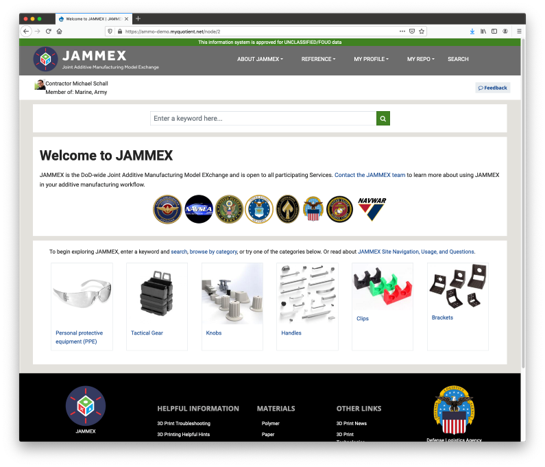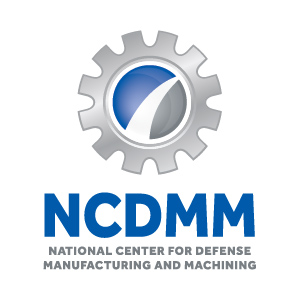


JAMMEX Exchange Model Platform open to all participating services.
Problem
A common tool does not exist that allows for the sharing of information related to 3D models across the Department of Defense (DoD). Each service has, at best, created its own silo of information that can be used internally but does not allow for collaboration across potential user base or services.
Objective
The objective was to build a system that can be flexible and agile to meet the individual needs of the services. JAMMEX’s open platform simplifies the process of sharing information and collaborating across the DoD. The extensibility of the system does not require participating services and agencies to settle on a single tool as JAMMEX is capable of supporting a variety of file and model formats.
Technical Approach
The project team built the JAMMEX platform using the latest release of Drupal 8. The NIH Drupal module (NIH 3DPX), which provides the core functionality for the NIH 3D Print Exchange, was ported from Drupal 7 to Drupal 8 and implemented into JAMMEX. To facilitate CAC/PIV access controls and two-factor authentication requirements, defined in Homeland Security Presidential Directive 12 (HSPD-12), the project team implemented a login via Shibboleth and connected this service to Drupal via the existing simple Security Assertion Markup Language (SAML) Authentication Drupal module. Access to the site is restricted. All access is logged and monitored according to Federal Information Security Management Act (FISMA) and DoD standards. JAMMEX is also leveraging DLA’s existing Account Management and Provisioning System (AMPS).
Accomplishments
Innovation can now be shared and leveraged across the services, which ultimately saves time, money and lives. DoD personnel can search through previously generated 3D models, which provide a knowledge baseline for future uses of additive manufacturing (AM), help avoid duplicate development efforts, and inform users of the criticality/risk profile of the AM part for that application. AM has the capability to produce parts on demand in support of warfighter material needs.
- Production version 1.0 delivered to DLA in August 2019 and went live in January 2020. This version began with three repositories (Marine, Army, SOCOM) and expanded to nine.
- Static dataset of 139 models from the Army Raptor system was uploaded to the Army Repo. A custom user
management interface was developed and AMPS workflow was activated. - Version 1.2 went live in May 2020 and added logout pages, accessibility scan passes, a 3D viewer and access to models across all services, including users not logged into a repo.
- Version 2.0 went live in June 2020 and added off-line access. It also added connection to RAPTOR, integration with Shibboleth and Blender Integration. Integration with Blender allows JAMMEX to generate web-compatible models from STL files.
- JAMMEX is updated regularly and continues to add quality-of-life upgrades.
Government services have used JAMMEX to print spare parts such as anti-reflection devices, door handles, drone parts, and brackets that would otherwise cost more and take longer to procure. JAMMEX has the potential to reduce readiness risks, improve responsiveness and decrease costs by providing alternate sources for hard-to-procure and obsolete parts
Project Participants
Project Principal

Other Project Participants
- Quotient
- Identify3d
Public Participants
- U.S. Department of Defense
- Air Force Research Laboratory
